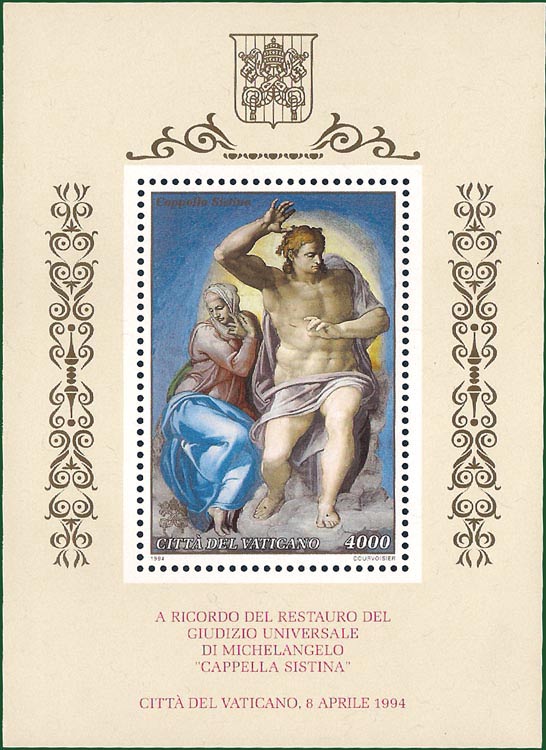 |
|
Christ and the Virgin - Detail of the Last Judgement |
|
|
|
The Last Judgement |
Quattrocento Decoration | The Ceiling Frescoes |
Raphael's Tapestries and their cartoons |
The Last Judgment is a canonical fresco by the Italian Renaissance master Michelangelo executed on the altar wall of the Sistine Chapel in Vatican City. The work took four years to complete and was done between 1536 and 1541 (preparation of the altar wall began in 1535.) Michelangelo began working on it some twenty years after having finished the Sistine Chapel ceiling. The Last Judgment was commissioned from Michelangelo by Pope Clement VII (1523-1534) shortly before his death. His successor, Paul III Farnese (1534-1549). forced Michelangelo to a rapid execution of this work, the largest single fresco of the century.
The work is massive and spans the entire wall behind the altar of the Sistine Chapel. It is a depiction of the Second Coming of Christ and the final and eternal judgment by God of all humanity. The souls of humans rise and descend to their fates, as judged by Christ surrounded by prominent saints including Saints Catherine of Alexandria, Peter, Lawrence, Bartholomew, Paul, Peter Simon, Sebastian, John the Baptist, and others.
The first impression we have when faced with the Last Judgment is that of a truly universal event, at the centre of which stands the powerful figure of Christ. His raised right hand compels the figures on the lefthand side, who are trying to ascend, to be plunged down towards Charon and Minos, the Judge of the Underworld; while his left hand is drawing up the chosen people on his right in an irresistible current of strength.
 |
|
Christ and the Virgin - Detail of the Last Judgement |
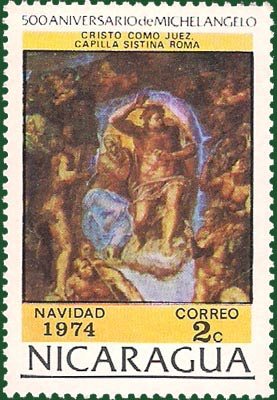 |
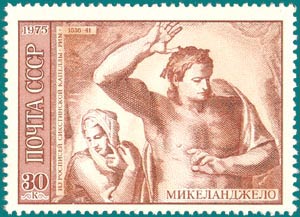 |
 |
| Christ and the Virgin - Last Judgement (detail) | ||
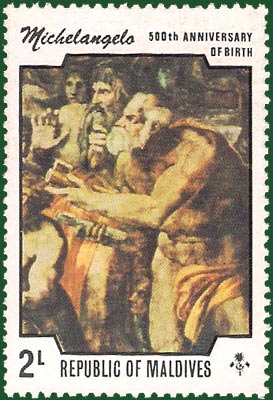 |
 |
 |
| Last Judgement (detail) | ||
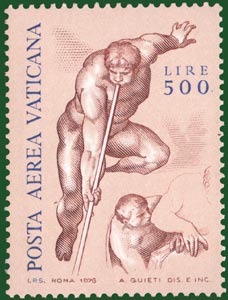 |
 |
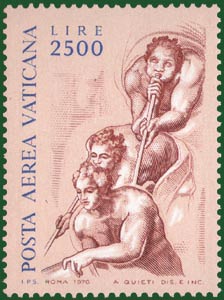 |
|
Angel with Trumpet |
Ascending figures |
Angels with Trumpets |
Together with the planets and the sun, the saints surround the Judge, confined into vast spacial orbits around Him. For this work Michelangelo did not choose one set point from which it should be viewed. The proportions of the figures and the size of the groups are determined, as in the Middle Ages, by their single absolute importance and not by their relative significance. For this reason each figure preserves its own individuality and both the single figures and the groups need their own background.
The figures who, in the depth of the scene, are rising from their graves could well be part of the prophet Ezechiels vision. Naked skeletons are covered with new flesh, men dead for immemorable lengths of time help each other to rise from the earth.
According to Vasari, the artist gave Minos, the Judge of the Souls, the semblance of the Popes Master of Ceremonies, Biagio da Cesena, who had often complained to the Pope about the nudity of the painted figures. We know that many other figures, as well, are portraits of Michelangelo's contemporaries. The artists self-portrait appears twice: in the flayed skin which Saint Bartholomew is carrying in his left hand, and in the figure in the lower left hand corner, who is looking encouragingly at those rising from their graves.
The fresco was restored along with the Sistine vault between 1980 and 1994 under the supervision of curator of the Vatican Museums Frabrizio Mancinelli.
(Source of Text : Wikipedia & Web Gallery of Art)
|
|